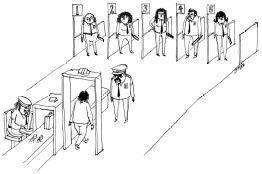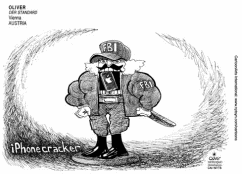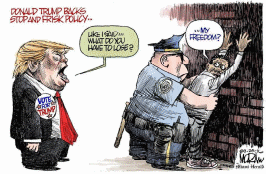A number of civil rights are guaranteed to people across the world by national constitutions. Nevertheless, disputes regarding restrictions and violations of civil liberties are receiving publicity, highlighting the current state of these issues. The right to privacy has become a prominent subject of public debate since the practice of global surveillance was revealed. Tracking, data collection, and data mining are usually justified for the purposes of security. At the same time, these practices create a situation in which an individual cannot feel secure using such private items as phones, e-mails, tablets, and other electronic systems that collect and store data. Moreover, violation of the right to privacy affects freedom of thought, expression, speech, the right to assembly, and other related liberties. The government, private institutions, and individuals can violate the right to privacy.
Although the issue is vital, a lack of awareness may lead to a shift from a negative assessment of transgressions of the right, to the rationalization of infractions and defense of violations as necessary acts. The role of political cartoons cannot be overestimated in emphasizing the problems that face the right to privacy, and increasing public alertness in considering the issue. The importance of caricatures and their influence on political life and public debate has developed from a low genre of illustration to a powerful tool that involves raising questions and social critique. The combination of image and textual content makes political caricatures an effective means of information: “interplay of language and visual rhetoric is the key to the appeal of the cartoon” (Bramlett 63). Political cartoons, through illustrations and text, communicate a message to the reader, alluding to significant issues in both metaphorical and explicit ways.
Political caricatures test how we perceive official information. They can manipulate readers’ sympathy and incline the audience to a negative or a positive assessment of the issue. The totality of a cartoon is created through the powerful means of image, colors, words, metaphors, and allusions. Political caricatures may be up to date, and refer to recent events. At the same time, some issues reflected in cartoons are not going away, in terms of public discourse (Navasky). The clarity of the cartoon language enhances the comprehension of disputes on the pages of newspapers, magazines, and online resources. In many cases, astute cartoons are stimuli for reading the editorials. Thus, the audience can not only be informed about the issue, but also is able to generate opinions about the question under discussion. The symbolism within political cartoons includes inherent, or rigid, and learned, or flexible, symbols. Politics is a field of signs and symbolic actions. Cartoonists interpret the processes, relations, and trends in the policy and create a condensed representation of a situation. However, readers should understand that political cartoons are not the ultimate truth, as “caricature distorts the original and it uses humor to reveal the shortcomings of, and occasionally to humiliate, its subject” (xviii).

This cartoon was published in The New Yorker on September 26, 2016. It depicts a person going through a security checkpoint. Several officers are in front of the individual. The simple pencil illustration is accompanied by the following words: “For your comfort, you will be searched by someone of your own level of sexiness.” This cartoon has two levels of comprehension. The first level refers to pictorial information and implies the current situation regarding security measures. All of an individual’s belongings, including shoes, are controlled. The justification, safety, does not leave room for privacy. The second level of the cartoon combines textual and illustrative parts. Thus, the caricature as a whole considers the condition of violating the right to privacy and discrimination at the same time. The cartoon reflects the viewer’s personal perception of the situation, as well. The experience of going through a security checkpoint is varied, and depends on gender, nationality, social status, passport type, and outfit.

This cartoon, created by Joel Pett, was published in the Lexington Herald-Leader on September 25, 2016. The caricature shows the presidential debate between Hillary Clinton and Donald Trump. The host of the debate lists important issues (privacy among them, as well) which need to be discussed. However, instead of starting the discussion, the final remark of the host is, “Any other topics we should ignore?” The textual content of this cartoon is more incisive than the illustration. This political caricature was the anticipation of the face-to-face encounter between the presidential candidates on September 26, 2016. The 90-minute interaction went without advertising breaks and was publicized nationwide as a must-watch event. The great fuss about the debate, its preparation, and how candidates might reply to each other’s remarks has tended to turn attention away from crucial points. Joel Pett’s work alludes to the perfunctory nature of the event.

The following political cartoon was published in Der Standard, an Austrian newspaper, on March 29, 2016. The caricature refers to a nutcracker, and provides the idea of how governmental institutions exploit private enterprises to bypass the right to privacy. The cartoon illustrates an iPhonecracker with a phone inside his mouth, about to break it. The iPhonecracker resembles a nutcracker; however, he is wearing an FBI uniform. The caricature speculates about state control of privacy through technology and business. The notion of cooperation between corporations and the government is not challenged in this illustration, though.

Another Joel Patt cartoon, published in the Lexington Herald-Leader on March 4, 2016, depicts the issue of collaboration between business enterprises and the state from the perspective of a customer. The caricature depicts a client who is asking a service worker about the privacy breach. The accompanying line accommodates the picture: “So, Mr. Genius… Who should I fear the most… The feds, tech giants, or terrorists?” The level of confusion among ordinary technology users is presented in this illustration. The introduction of new gadgets or technology to the market generates rumors and hypotheses about privacy gaps, leaking of personal information, data collection, and the threat to civil freedoms. Moreover, this caricature refers to danger from terrorists, who use technology for their purposes. Such speculations highly circulated in media disorient people, forcing them to be afraid of almost everything.

Jim Moring’s “Donald Trump backs stop and frisk policy” cartoon was published in the Miami Herald on September 25, 2016. This illustration is linked to the Monday night debate on September 26, and mocks Trump’s standpoint. The caricature depicts a man of color who is stopped and searched by the police. The Donald Trump character, an advocate of New York City’s stop-and-frisk policy, declares, “Like I said… What do you have to lose?” The other man answers, “… my freedom?” While Mr. Trump saw the correlation between the cancellation of the policy and an increase in crime, a real distrust toward the NYPD, especially among citizens of minority ethnic groups, is prevalent.
Moreover, the exchange of remarks between the man being searched and the presidential candidate indicates the valuation of freedom. The man is clinging to his civil rights, which are valued by him as an essential part of his life. The Trump character views civil liberties as an optional element that can be violated or reduced. The coloration of the cartoon deserves particular attention. The man is shoved by a policeman against a dark-painted wall, while the Trump character is on the bright side of the picture, wearing a black suit and red tie. The combination of intense, clear colors and shadowed tones symbolizes who is in a position of power.
The mixture of pictorial and textual information generates simplicity and depth in political cartoons. This compressed form of analysis and critique of political and social life includes symbols, metaphors, references to previous events and common knowledge, and allusions to cultural traits, practices, and traditions. Political caricatures provide the audience with a sharp reaction on an issue. Though taunting particular characters and situations, cartoons do not impose their presented view as an ultimate truth. The format of political caricatures invites the readers to assess current official and civil agendas from a critical standpoint. As a manifestation of such liberties as freedom of thought and expression, political cartoons are crucial in raising questions and opening public debate about civil rights. The analyzed caricatures illustrate quick reactions to a recent event (the first presidential debate) and a fresh view of the issue of privacy and its violations.
References
Bramlett, Frank, ed. Linguistics and the Study of Comics. London: Springer, 2012. Print.
Navasky, Victor S. The Art of Controversy: Political Cartoons and Their Enduring Power. New York: Knopf Doubleday Publishing Group, 2013. Print.